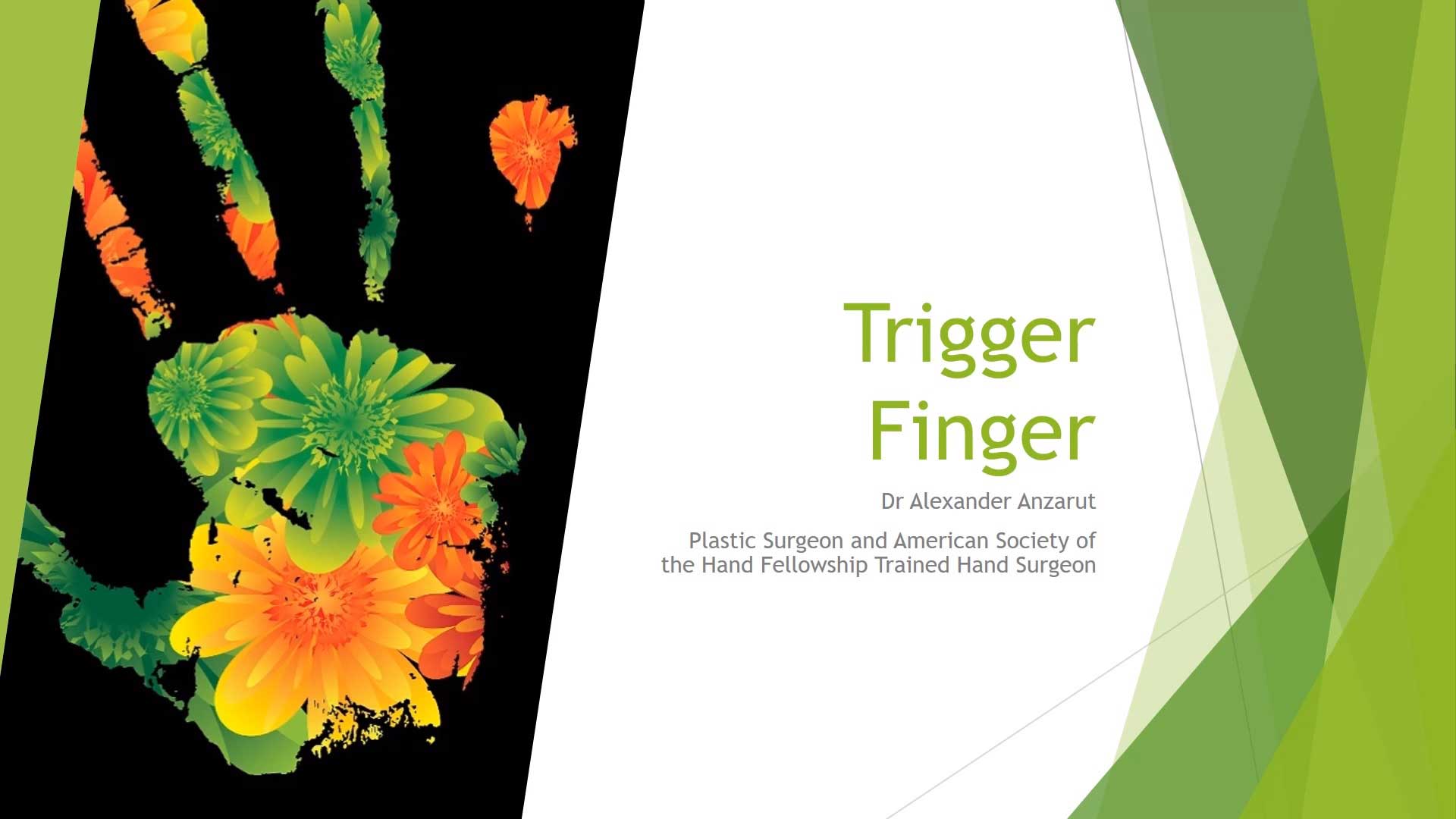
What is Trigger Finger?
- Patients with this condition will have a sense of stiffness in the finger.
- Often worse in the morning.
- There is often pain over the finger in the finger knuckle region or this region here.
- There is tenderness or it hurts when it’s pressed in the palm in this region here.
- The finger may click or lock when opening and closing.
- Sometimes patients will have a problem fully straightening the finger, especially at this joint here in the finger.
Why Does Trigger Finger Happen?
- The tendons in the hand go through a series of tunnels also known as pulleys. This structure here is the tendon. This one here, we call the A1 pulley.
- With heavy grip and use, the tenon rubs against the tunnel in almost a bow stringing effect.
- This friction leads to tendon swelling and tunnel narrowing, and this makes the problem worse.
- Or the tendon actually gets stuck as it travels in and out of this A1 pulley tendon tunnel.
How is it Initially Treated?
- Resting the finger and avoiding heavy lifting and heavy gripping can sometimes improve the condition.
- Splinting the finger straight at night can sometimes help as well.
- Most people I see are treated initially with a cortisone injection to the finger.
- This will decrease the swelling of the tendon and decrease the narrowing of the tunnel.
- 50% of patients are cured with one injection.
- 85% are cured with two injections.
- Injections in the same digit or the same place should be spaced apart by about three months.
- As with any other treatment, there can by side effects. Injections with cortisone can increase the blood sugar level by two to three points for up to 24 hours.
What About Surgery?
Surgery is sometimes used as well.
- This may provide a definitive solution. In about 95% of cases, the triggering does not come back.
- It is done with local anesthetic or freezing.
- Surgery involves removing the tunnel or the roof of the pulley that is enclosed around the tendon in the area of swelling. This photo shows an example of a tendon pulley or tunnel that has been released or opened, thus allowing the tendon to glide more freely.
What are the Side Effects and Risks of Surgery?
As with any surgery, there are risks and side effects.
- Side effects:
- The incision must be kept clean and not placed under water for the first four weeks.
- The incision may be tender and slightly swollen for up to six months.
- Risks include:
- Infection is the most concerning risk. Infections in these incisions can travel up or down the finger and lead to a significant area of problem. Infections must be avoided.
- Stiffness
- Numbness
- Pain that can be either short-term or long-term.
Watch Dr. Anzarut’s Video on Trigger Finger